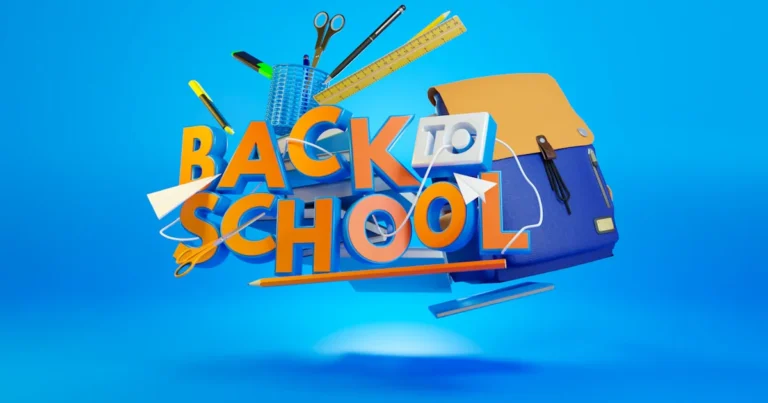Support our educational content for free when you purchase through links on our site. Learn more
How to Get Free Stuff for Your Classroom [2024]
Did you know that 94% of teachers spend their own money on classroom supplies, averaging nearly $500 each year? That’s a significant amount of money coming out of teachers’ pockets just to provide the best learning experience for their students. But what if we told you that there are ways to get free stuff for your classroom? Yes, you read that right! In this article, we will share with you some creative and effective ways to get free supplies, resources, and materials for your classroom. So, let’s dive in and discover how you can save money while still providing an engaging learning environment for your students.
Table of Contents
- Quick Answer
- Quick Tips and Facts
- Background: The Importance of Free Classroom Supplies
- 1. Freecycle: Join or Start a Local Group
- 2. Amazon Wish List: Set Up a Classroom Wish List
- 3. Donors Choose: Organize Ongoing Fund
- 4. Local Charitable Organizations: Inform Students and Families
- 5. Corporate and Website Giveaways: Follow School Supply Companies
- 6. Corporate Donations: Reach Out to Companies
- 7. Local Businesses: Ask for Donations
- 8. Online Groups: Browse for Free Supplies
- 9. Bartering: Organize a Teacher Group
- 10. Class Parents: Request Specific Supplies
- 11. Grants: Apply for Education Grants
- 12. End-of-Year Surplus: Collect Unused Supplies
- 13. Turn Trash Into Treasure: Collect Dropped Supplies
- 14. Family and Friends: Ask for Donations
- 15. Depths of the Supply Closet: Search for Usable Supplies
- FAQ
- Conclusion
- Recommended Links
- Reference Links
Quick Answer
Looking for free stuff for your classroom? Here are 15 creative ways to get free supplies, resources, and materials for your classroom:
- Join or start a local Freecycle group.
- Set up an Amazon Wish List for your classroom.
- Organize an ongoing fund through Donors Choose.
- Inform students and families about local charitable organizations.
- Follow school supply companies on social media for contests and giveaways.
- Reach out to companies for in-kind donations.
- Ask local businesses for donations or set up collection boxes.
- Browse online groups like Craig’s List and Facebook Marketplace for free supplies.
- Organize a teacher group for supply trading.
- Request specific supplies from class parents and accept gently used items.
- Apply for grants from organizations providing money for school supplies.
- Collect unused supplies from students’ lockers at the end of the year.
- Collect dropped pencils and pens to repurpose as supplies.
- Ask family and friends for supply donations and encourage creative sourcing.
- Search for usable supplies in the depths of the supply closet.
Now, let’s explore each of these methods in more detail and discover how you can get free stuff for your classroom.
Quick Tips and Facts
Before we dive into the different ways to get free stuff for your classroom, here are some quick tips and facts to keep in mind:
- Be proactive and reach out to various sources for donations.
- Utilize social media platforms to connect with companies and organizations.
- Don’t be afraid to ask for help. Many people are willing to support teachers and education.
- Consider organizing a supply drive or event to gather donations.
- Always express gratitude and acknowledge the generosity of others.
Now, let’s explore the background and importance of free classroom supplies.
Background: The Importance of Free Classroom Supplies
As a teacher, you understand the importance of having the right supplies and resources to create a conducive learning environment for your students. However, the cost of classroom supplies can quickly add up, especially if you’re purchasing them out of your own pocket. That’s why finding free classroom supplies is essential for both your budget and your students’ learning experience.
By getting free stuff for your classroom, you can:
- Provide a variety of materials and resources to cater to different learning styles.
- Enhance student engagement and participation through hands-on activities.
- Create a visually appealing and stimulating learning environment.
- Support students who may not have access to necessary supplies at home.
- Foster a sense of community and collaboration by involving parents, businesses, and organizations in the classroom.
Now that we understand the importance of free classroom supplies, let’s explore the different methods to acquire them.
1. Freecycle: Join or Start a Local Group
Freecycle is a grassroots movement that aims to reduce waste by connecting people who have items they no longer need with those who can use them. Joining or starting a local Freecycle group can be an excellent way to find free supplies for your classroom. Here’s how it works:
- Search for a local Freecycle group in your area.
- Join the group and become an active member.
- Post a request for specific classroom supplies or materials.
- Keep an eye on the group’s listings for items that may be useful to you.
- Arrange for pick-up or delivery of the items.
By participating in a local Freecycle group, you can not only get free supplies for your classroom but also contribute to reducing waste and promoting sustainability.
2. Amazon Wish List: Set Up a Classroom Wish List
Amazon Wish List is a convenient way to create a list of items you need for your classroom and share it with others who may be willing to donate. Here’s how you can set up a classroom wish list on Amazon:
- Create an Amazon account if you don’t already have one.
- Visit the Amazon Wish List page and click on “Create a List.”
- Choose a name for your list, such as “Mrs. Smith’s Classroom Wish List.”
- Start adding items to your list by searching for them on Amazon.
- Customize your list by adding descriptions or priority levels to each item.
- Share your wish list with parents, colleagues, and community members.
By setting up an Amazon Wish List, you make it easy for people to contribute to your classroom by purchasing items directly from the list. It’s a convenient way to receive donations without the hassle of coordinating pick-ups or deliveries.
3. Donors Choose: Organize Ongoing Fund
Donors Choose is a crowdfunding platform specifically designed for teachers. It allows you to create a project proposal and seek funding for classroom supplies, resources, and experiences. Here’s how you can use Donors Choose to get free stuff for your classroom:
- Create an account on the Donors Choose website.
- Start a project by describing what you need and why it’s important for your students.
- Set a fundraising goal and specify the items you need.
- Share your project with friends, family, and your social network.
- Donors can contribute to your project by making a monetary donation.
- Once your project is fully funded, Donors Choose will purchase and deliver the items to your classroom.
Donors Choose is an excellent platform for teachers to seek ongoing funding for their classroom needs. It allows you to showcase your projects and connect with donors who are passionate about supporting education.
4. Local Charitable Organizations: Inform Students and Families
Many local charitable organizations and nonprofits organize back-to-school backpack giveaways or supply drives to support students in need. By informing your students and their families about these initiatives, you can ensure that those who require assistance can access free school supplies. Here’s how you can inform students and families about local charitable organizations:
- Compile a list of local charitable organizations that provide free school supplies.
- Share this list with your students and their families through newsletters or emails.
- Provide information on how to access these resources and any eligibility criteria.
- Encourage families to take advantage of these opportunities and support the organizations.
By connecting your students and their families with local charitable organizations, you can ensure that every student has the necessary supplies to succeed in the classroom.
5. Corporate and Website Giveaways: Follow School Supply Companies
Many school supply companies and websites run contests and giveaways on their social media platforms. By following these companies and participating in their giveaways, you have a chance to win free supplies for your classroom. Here’s how you can take advantage of corporate and website giveaways:
- Identify school supply companies and websites that offer giveaways.
- Follow them on social media platforms like Facebook, Instagram, and Twitter.
- Keep an eye out for their giveaway announcements and instructions.
- Participate in the giveaways by following the specified rules, such as liking, sharing, or commenting on their posts.
- Cross your fingers and hope to win!
While winning a giveaway is not guaranteed, it’s worth participating as it can potentially provide you with free supplies for your classroom.
6. Corporate Donations: Reach Out to Companies
Many companies have corporate social responsibility programs that include donating to schools and educational institutions. By reaching out to these companies and explaining your classroom needs, you may be able to secure in-kind donations. Here’s how you can reach out to companies for donations:
- Identify companies in your local area or those with a presence in your community.
- Research their corporate social responsibility initiatives and donation policies.
- Draft a letter or email explaining your classroom needs and how their donation would make a difference.
- Send your letter or email to the appropriate contact person or department.
- Follow up with a phone call or additional communication if necessary.
By proactively reaching out to companies, you increase your chances of receiving donations that can benefit your classroom and students.
7. Local Businesses: Ask for Donations
Local businesses, especially those in your community, may be willing to support your classroom by providing donations or sponsorships. Here’s how you can approach local businesses for donations:
- Identify local businesses that align with your classroom needs or educational goals.
- Visit the businesses in person or contact them via phone or email.
- Explain your classroom needs and how their donation or sponsorship would benefit your students.
- Provide information on how their business will be acknowledged or promoted in return.
- Follow up with a thank-you note or gesture to express your gratitude.
Local businesses often appreciate the opportunity to give back to the community, and supporting education is a cause that many are passionate about.
8. Online Groups: Browse for Free Supplies
Online platforms like Craig’s List and Facebook Marketplace can be treasure troves for finding free supplies. Many people give away items they no longer need, and you may find classroom supplies among them. Here’s how you can browse online groups for free supplies:
- Create an account on platforms like Craig’s List and Facebook Marketplace.
- Search for free items or browse the “Free” section.
- Use keywords like “school supplies” or “classroom materials” to narrow down your search.
- Contact the individuals offering the items and arrange for pick-up or delivery.
While browsing online groups requires some time and effort, it can yield great results and help you acquire free supplies for your classroom.
9. Bartering: Organize a Teacher Group
Teachers often have surplus supplies or materials that they no longer need. By organizing a teacher group for supply trading, you can exchange items with your colleagues and get the supplies you need for your classroom. Here’s how you can organize a teacher group for bartering:
- Reach out to your colleagues and propose the idea of a supply trading group.
- Set up a system for members to list the items they have available for trade.
- Arrange regular meetings or online exchanges to facilitate the trading process.
- Create guidelines or rules to ensure fairness and transparency.
By bartering with other teachers, you can get rid of surplus supplies while acquiring new ones that are useful for your classroom.
10. Class Parents: Request Specific Supplies
Class parents are often willing to support their child’s education by providing supplies for the classroom. By requesting specific supplies from class parents, you can ensure that you receive the items you need. Here’s how you can request specific supplies from class parents:
- Compile a list of specific supplies or materials that would benefit your classroom.
- Communicate with class parents through newsletters, emails, or parent-teacher conferences.
- Clearly explain the purpose and importance of each requested item.
- Provide options for purchasing new items or donating gently used ones.
By involving class parents in the process, you not only receive the supplies you need but also foster a sense of community and collaboration.
11. Grants: Apply for Education Grants
Many organizations provide grants specifically for teachers and schools to fund classroom supplies and projects. By applying for education grants, you can secure funding for free supplies. Here’s how you can apply for education grants:
- Research organizations and foundations that offer education grants.
- Review their grant guidelines and eligibility criteria.
- Prepare a compelling grant proposal that outlines your classroom needs and how the grant would be used.
- Submit your grant proposal within the specified deadline.
- Follow up with any additional information or documentation if requested.
Applying for education grants requires time and effort, but it can be a rewarding way to secure funding for your classroom.
12. End-of-Year Surplus: Collect Unused Supplies
At the end of the school year, students often have unused supplies in their lockers or desks. By collecting these unused supplies, you can repurpose them for the next school year. Here’s how you can collect end-of-year surplus supplies:
- Inform students and their families about the collection of unused supplies.
- Provide collection boxes or designated areas for students to drop off their unused supplies.
- Sort and organize the collected supplies for future use.
By collecting end-of-year surplus supplies, you not only save money but also reduce waste and promote sustainability.
13. Turn Trash Into Treasure: Collect Dropped Supplies
Throughout the school year, students may drop or misplace pencils, pens, and other supplies. By collecting these dropped supplies, you can repurpose them for classroom use. Here’s how you can turn trash into treasure:
- Encourage students to bring any dropped supplies to your attention.
- Provide a designated area or container for students to deposit the dropped supplies.
- Clean and sanitize the collected supplies before using them in the classroom.
By repurposing dropped supplies, you not only save money but also teach students the importance of resourcefulness and sustainability.
14. Family and Friends: Ask for Donations
Don’t underestimate the power of your personal network when it comes to getting free stuff for your classroom. Family and friends are often willing to support your teaching efforts by providing donations. Here’s how you can ask for donations from family and friends:
- Reach out to your family and friends through personal conversations, emails, or social media.
- Explain your classroom needs and how their donation would make a difference.
- Provide options for purchasing new items or donating gently used ones.
- Express your gratitude and acknowledge their support.
By involving your family and friends, you not only receive donations but also strengthen your personal connections.
15. Depths of the Supply Closet: Search for Usable Supplies
Last but not least, don’t forget to explore the depths of the supply closet in your school. Over time, supplies may accumulate and go unused. By searching the supply closet, you may find hidden treasures that can be repurposed for your classroom. Here’s how you can search for usable supplies:
- Request permission from your school administration or custodial staff to access the supply closet.
- Organize and sort through the supplies, identifying items that are still usable.
- Clean and sanitize the supplies before using them in your classroom.
By utilizing the supplies already available in your school, you can save money and reduce waste.
FAQ
Is Google Classroom no longer free?
No, Google Classroom is still free for teachers and students to use. It provides a digital platform for classroom management, assignments, and communication.
How to get Google Classroom for free?
To get Google Classroom for free, simply visit the Google Classroom website and sign in with your Google account. You can create classes, invite students, and start using the platform without any cost.
How do you ask for help with classroom supplies?
When asking for help with classroom supplies, be clear and specific about your needs. You can reach out to local businesses, organizations, and individuals through letters, emails, or in-person conversations. Explain the purpose and importance of the supplies and how they will benefit your students’ learning experience.
Read more about “Teacher Supplies Online: Your Ultimate Guide …”
How do I get stuff for my classroom?
There are several ways to get stuff for your classroom, including joining local Freecycle groups, setting up an Amazon Wish List, organizing ongoing funds through Donors Choose, informing students and families about local charitable organizations, following school supply companies for giveaways, reaching out to companies for donations, asking local businesses for support, browsing online groups for free supplies, organizing teacher groups for supply trading, requesting specific supplies from class parents, applying for education grants, collecting end-of-year surplus supplies, repurposing dropped supplies, asking for donations from family and friends, and searching the supply closet in your school.
Now that you have a comprehensive understanding of how to get free stuff for your classroom, it’s time to take action and start implementing these strategies. Remember, by being proactive and resourceful, you can provide an engaging learning environment for your students without breaking the bank.
Read more about “Best Teacher Supply Store …”
Conclusion
In conclusion, getting free stuff for your classroom is not only possible but also essential for teachers who want to provide the best learning experience for their students. By utilizing the methods we’ve discussed in this article, such as joining local Freecycle groups, setting up an Amazon Wish List, and reaching out to companies and local businesses, you can acquire free supplies, resources, and materials for your classroom. Remember to be proactive, express gratitude, and involve your students, their families, and your personal network in the process. With a little creativity and resourcefulness, you can create an engaging and inspiring learning environment for your students without spending a fortune.
Recommended Links
- Classroom Supplies – Explore a wide range of classroom supplies at Teacher Supply Store™.
- Teachers’ Guides – Find helpful guides and resources for teachers at Teacher Supply Store™.
- Teacher Planners and Organizers – Stay organized with teacher planners and organizers from Teacher Supply Store™.
- Seasonal Classroom Decorations – Discover seasonal classroom decorations to create a festive learning environment at Teacher Supply Store™.
- Cheap Classroom Supplies for Teachers – Learn how to find affordable classroom supplies for teachers at Teacher Supply Store™.






